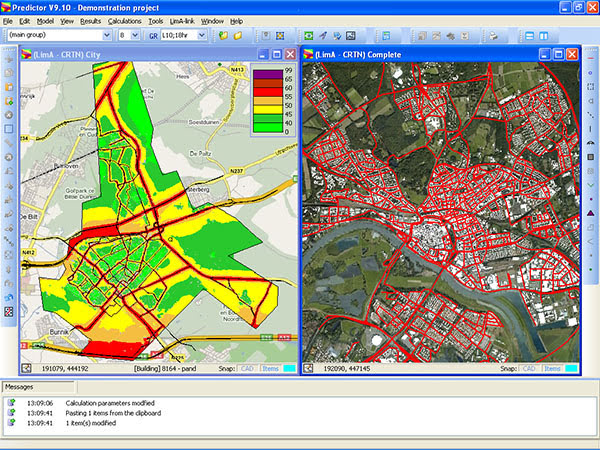Noise Mapping Software
Overview As well as the acoustic analysis and measurement tools in the basic, there are three options in the DATS software that are designed to measure and acoustic data – the Acoustic Analysis Suite, the Psychoacoustics Analysis Suite and the DATS Sound Mapping Software. Acoustic Analysis Suite The suite covers a wide range of acoustic s. 1/N Octave filters can be used with either time signals or narrow band spectral data. Sound Power Analysis allows the measurement of sound power using either sound intensity probes or microphones according to the international standards ISO3744, ISO3745 and ISO9614-1. Sound Level Meter function provides a number of analyses that mimic the operation of a simple sound level meter. Transmission Loss functions are automated measurement and analysis procedures for determining the effectiveness of either panels for room acoustics or pipes for exhaust mufflers.
Noise Mapping
List of all router commands. A noise map is a graphic representation of the sound level distribution existing. Examples for software packages used for noise mapping are: LimA; CadnA; Code. After over 20 years of development, noise mapping software is, today, a professional tool that is widely used by many people with different backgrounds and experience.
Room Acoustics Reverberation Time T60 and Total Absorption functions use the noise source switch-off method. The T60 determination is based on a practical measurement with a decay in the room of less than 60dB. Two-Microphone Impedance Measurement Tube, (B&K Type 4206), is a completely scripted measurement procedure for guiding the user in making an accurate measurement of the acoustic properties of small material samples, it complies with ISO10534 and ANSI E1050. Psychoacoustics Analysis Suite In simple terms, psychoacoustics is the study of the relationship between the physical measures of sound, amplitude and frequency and the human perception of them. The DATS Psychoacoustics Analysis Suite provides a host of functions for the objective description of subjective sounds. Hearing is not purely wave propagation from one medium to another, it is a sensory and perceptual event.
When a person hears a sound, it arrives at the ear as a wave travelling through the air, but within the ear it is transformed into neural signals by a number of mechanisms. These nerve pulses then travel to the brain where they are perceived. Hence for many problems in acoustics it is advantageous to take into account not just the mechanics of the environment, but also the fact that both the ear and the brain are involved in a person’s listening experience.

Noise Mapping Software
Human hearing can be compared to a spectrum analyzer – the ear resolves the spectral content of the pressure wave. This even includes phase information, which provides a significant part of the directional sensation of sound. One good example of the power of psychoacoustics is listening to crackly, hiss-filled, vinyl records; the listener soon stops noticing the background noise, and enjoys the music, despite the presence of the hiss in the audible sound. A listener who does this often appears to forget about the noise altogether and may not be able to tell after listening if there was noise present. This effect is called psychoacoustical masking.
Sound Mapping Software The DATS Sound Mapping software package consists of two main parts: The first is the sound pressure mapping software. This measures sound pressure from a grid of microphones or from several measurements using a single microphone. The measurements are then used to create a two-dimensional map of the sound emitted by the test piece. The mapping information can be overlaid on a picture of the test item to allow better visualization of the data. The second is sound power mapping, which uses a sound intensity probe to measure sound intensity at a series of grid points across a test piece. Again, a color or contour map can be created to allow visualization of the sound fields.